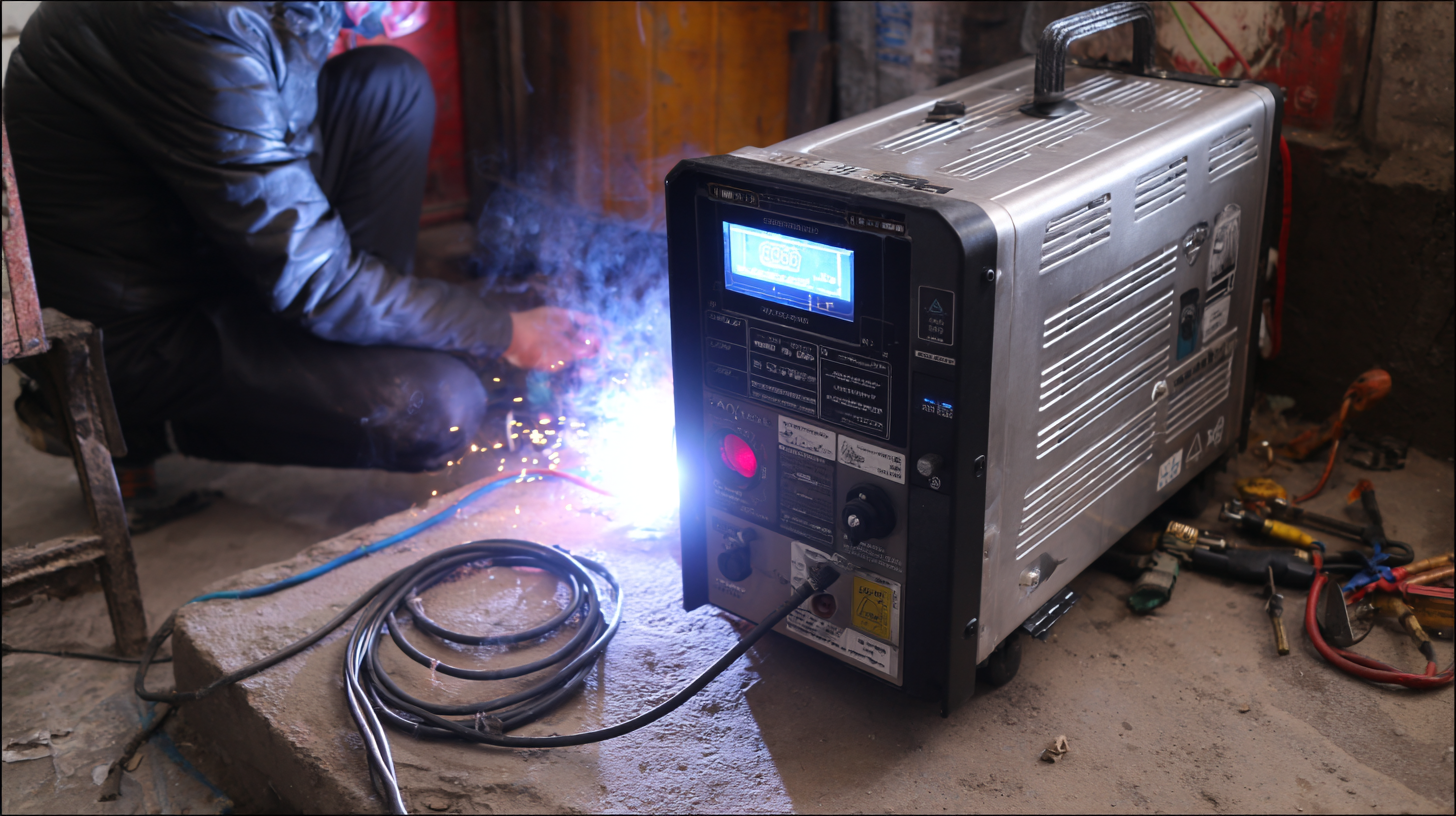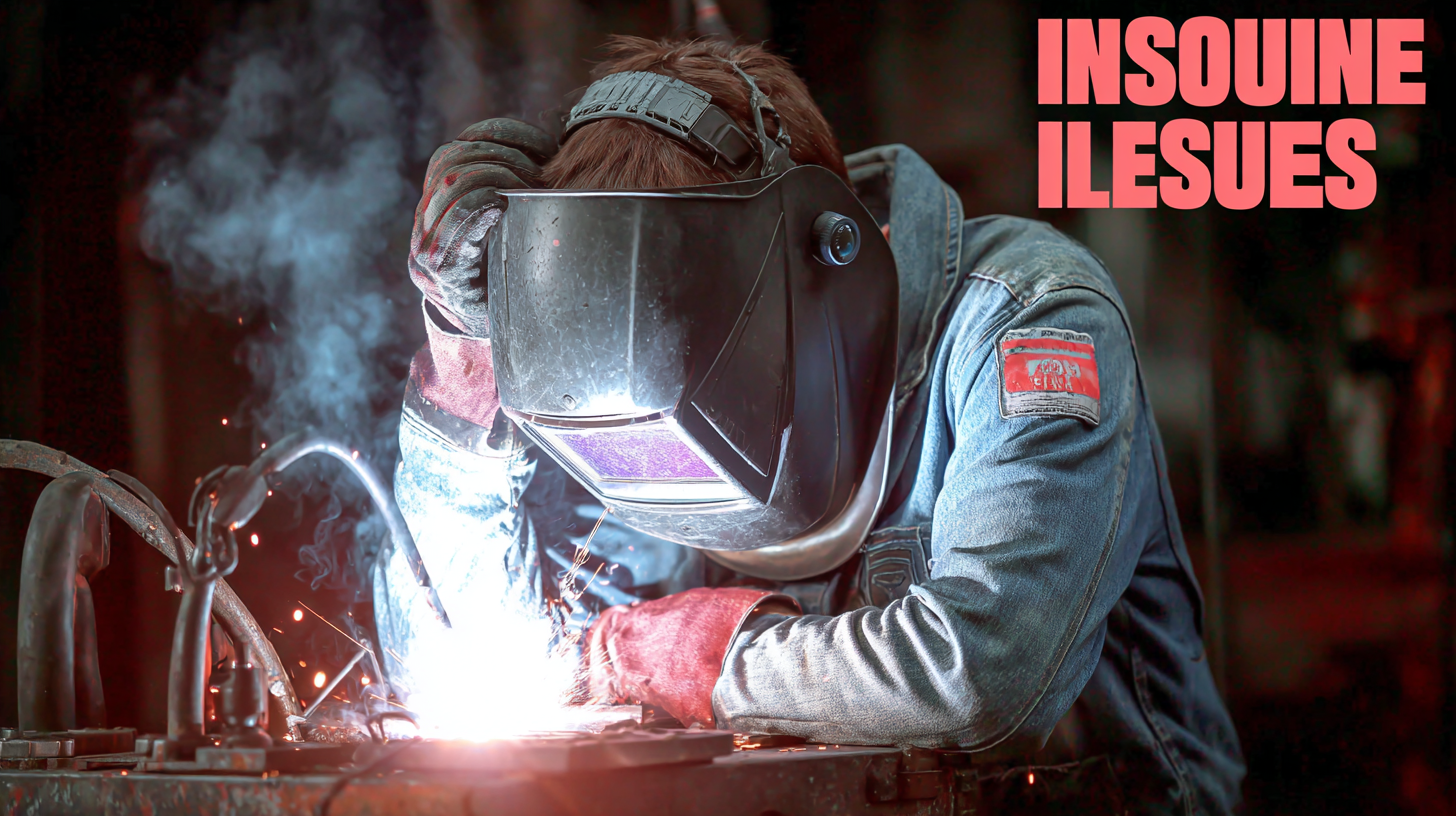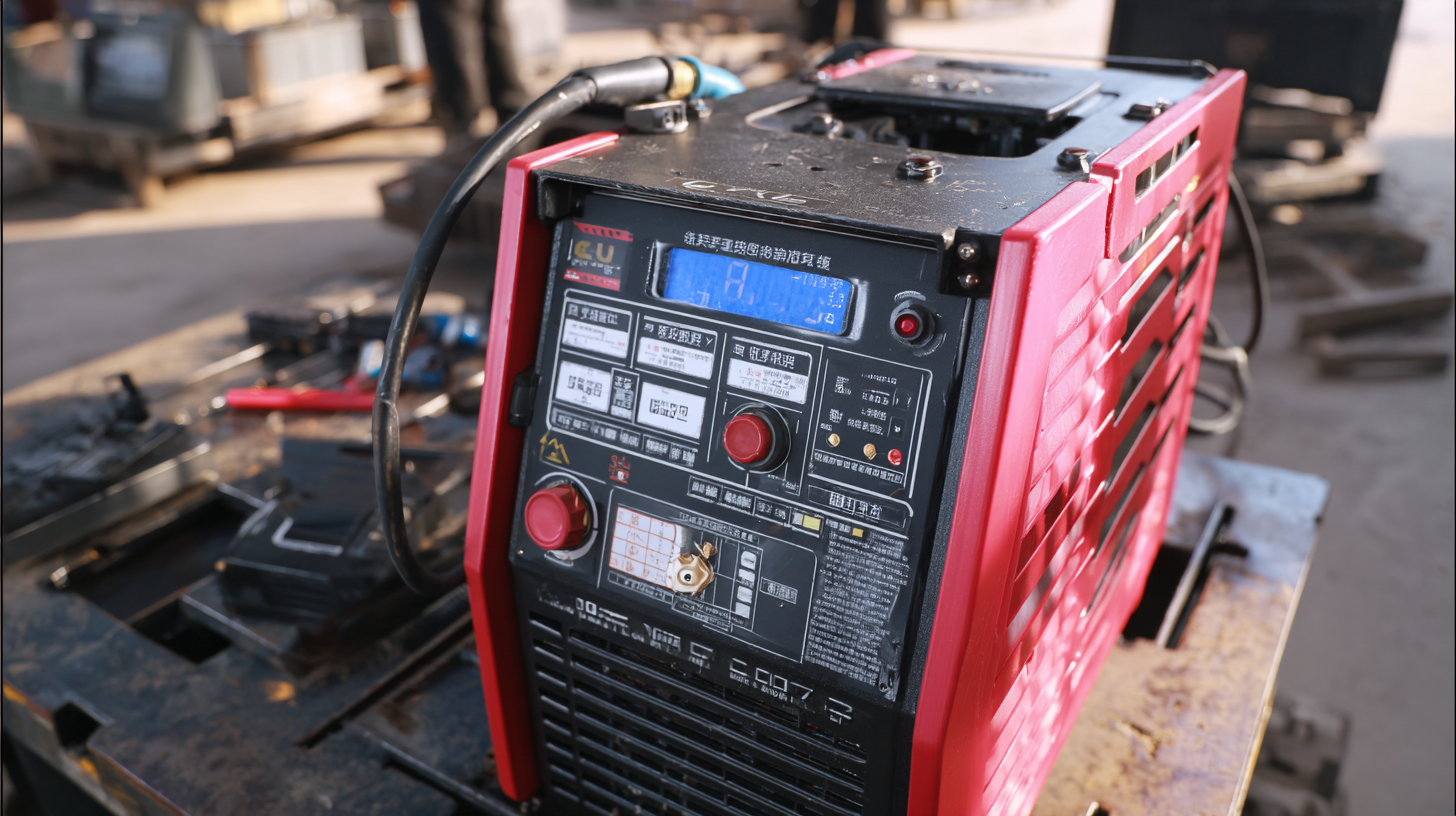In recent years, the adoption of Inverter Welding Machines has transformed the welding industry, offering enhanced portability, efficiency, and versatility compared to traditional welding systems. According to a recent market research report by Mordor Intelligence, the global welding equipment market is projected to reach $24.73 billion by 2026, with inverter technology playing a significant role in this growth. Despite their advantages, users often encounter common issues, including arc instability, inadequate power supply compatibility, and learning curves associated with advanced features. Understanding these challenges is crucial for both novice and experienced welders, as proper knowledge can significantly enhance the welding experience and outcomes. In this blog, we will delve into typical obstacles faced by users of Inverter Welding Machines and provide practical solutions to overcome them, ensuring optimal performance in various welding applications.

Inverter welding machines have revolutionized the welding industry with their portability and efficiency. However, users often encounter common issues that can hinder productivity. One prevalent problem is overheating, which can occur if the machine is used continuously for extended periods. According to a report by the American Welding Society, approximately 30% of inverter machine failures are attributed to inadequate cooling or ventilation. To mitigate this, it is essential to allow the machine to cool down during prolonged use and ensure proper airflow around the unit.
Another frequent issue is arc stability. Many welders report problems with inconsistent arcs, which can result from various factors, including settings not being optimized for the material type or thickness. A study by the International Institute of Welding highlights that nearly 25% of inconsistencies in weld quality stem from improper machine settings. Users should regularly calibrate their machines and adapt parameters to match the specific requirements of their projects. Addressing these common challenges can significantly enhance the performance and longevity of inverter welding machines, ensuring high-quality results in welding applications.
Maintaining an inverter welding machine is essential for ensuring optimal performance and longevity. One of the most crucial aspects of maintenance is regular cleaning. Dust and debris can accumulate within the machine, affecting its efficiency and potentially leading to overheating. Establishing a routine cleaning schedule, which includes wiping down the exterior and ensuring that air vents are free from obstructions, can greatly enhance the machine's performance.
Another key tip for maintaining your inverter welding machine involves monitoring and checking the electrical connections. Loose or corroded connections can lead to erratic performance or power disruptions. Regularly inspecting these connections and tightening any loose wires can prevent major issues. Additionally, ensuring that the machine is used in a suitable environment—away from excessive moisture or extreme temperatures—can help in reducing wear and tear, ultimately prolonging the lifespan of the equipment.

 Proper settings in inverter welding are crucial for achieving high-quality welds and ensuring the longevity of the equipment. Inverter welding machines are designed to provide precise control over various welding parameters such as voltage, current, and feeding speed. Understanding how to adjust these settings according to the material type and thickness can significantly affect the efficiency and strength of the weld. For example, using too high a current setting may lead to burn-through on thinner materials, while too low a setting can result in weak and ineffective welds.
Proper settings in inverter welding are crucial for achieving high-quality welds and ensuring the longevity of the equipment. Inverter welding machines are designed to provide precise control over various welding parameters such as voltage, current, and feeding speed. Understanding how to adjust these settings according to the material type and thickness can significantly affect the efficiency and strength of the weld. For example, using too high a current setting may lead to burn-through on thinner materials, while too low a setting can result in weak and ineffective welds.
Moreover, users often overlook the importance of maintaining the right balance between travel speed and arc length. A consistent travel speed is fundamental in producing even weld beads and minimizing defects. Additionally, adjusting the arc length according to the specific welding process can help in preventing issues such as spatter and inadequate fusion. Knowledge of these proper settings not only enhances the quality of the weld but also reduces the likelihood of equipment malfunction and downtime. Therefore, investing time in understanding these adjustments can prove invaluable for both novice and experienced welders alike.
When it comes to inverter welding machines, understanding the signs of trouble can save users both time and money. Common issues like inconsistent arc stability, overheating, and unusual noises could indicate underlying mechanical or electrical problems. According to a report from the American Welding Society, approximately 30% of welding machine failures are linked to improper maintenance and early signs of trouble being ignored. Addressing these issues promptly can greatly prolong the lifespan of the equipment and ensure safety during operation.
Recognizing when to seek professional help is crucial for users. If your machine frequently trips circuit breakers or produces erratic welds, these are serious indicators that warrant a technician's evaluation. Research shows that regular inspections and tune-ups can mitigate up to 40% of performance issues in welding machines, as noted in the Welding Equipment Manufacturers Committee's guidelines. By being proactive and seeking expert assistance at the first sign of trouble, users can maintain optimal performance and avoid costly repairs down the line.
When comparing inverter welding machines, understanding the key features is essential for making an informed decision. One major consideration is the power output, often measured in amps. According to the American Welding Society (AWS), machines with higher power ratings tend to deliver more consistent welds across a variety of materials. Industry reports indicate that inverter machines ranging from 200 to 300 amps are optimal for both hobbyists and professionals, allowing for versatility in applications like TIG and MIG welding.
Another crucial feature is the duty cycle, which denotes how long a welder can operate before needing to cool down. The most reliable inverter machines boast a duty cycle of 60% at maximum output. This statistic is particularly significant when working on large projects, as a machine that cannot maintain performance can lead to productivity losses. Furthermore, features like pulse welding capability and adjustable arc controls have been shown to enhance the overall welding quality and ease of use, catering to the diverse needs of welders in different settings. As the market continues to evolve, keeping an eye on these specifications will help users choose the right machine that meets their welding requirements effectively.
| Feature | Description | Common Issues | User Feedback |
|---|---|---|---|
| Power Output | The maximum output of the machine in amperes. | Inconsistent power delivery causing weld defects. | Users often note fluctuations in power affecting weld quality. |
| Weight | Portability measure, typically in pounds or kilograms. | Heavy machines can be challenging to move and set up. | Some users prefer lightweight models for ease of use. |
| Duty Cycle | The period the machine can operate without overheating. | Longer tasks lead to overheating and downtime. | Feedback suggests users need machines with higher duty cycles. |
| Efficiency Rating | Percentage of energy converted into usable power. | Lower efficiency may result in higher electricity bills. | Many users prefer energy-efficient models for cost savings. |
| Control Features | Settings for adjusting voltage, wire feed speed, etc. | Complex controls can be difficult for beginners. | Users suggest simpler controls for novice welders. |
| Warranty | Period the manufacturer covers repairs. | Limited warranties can deter buyers. | Feedback indicates preference for longer warranty periods. |
